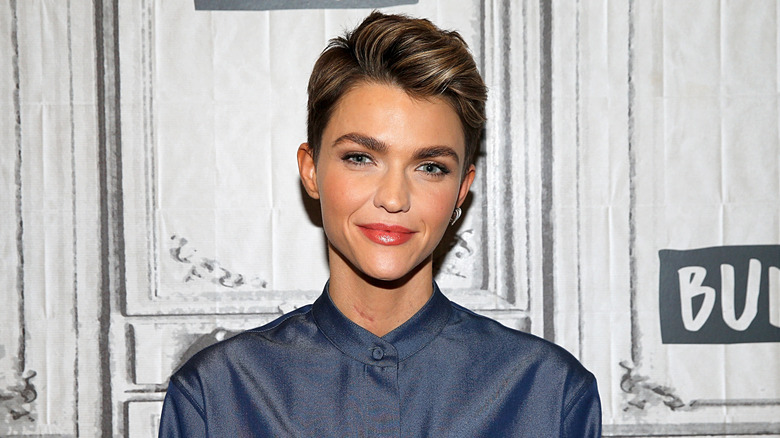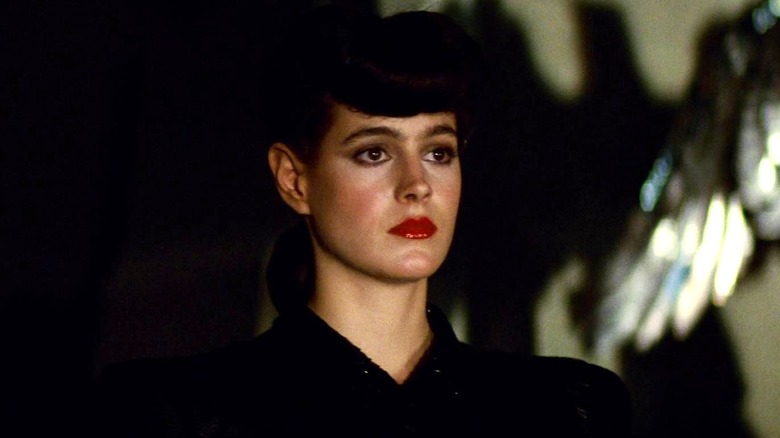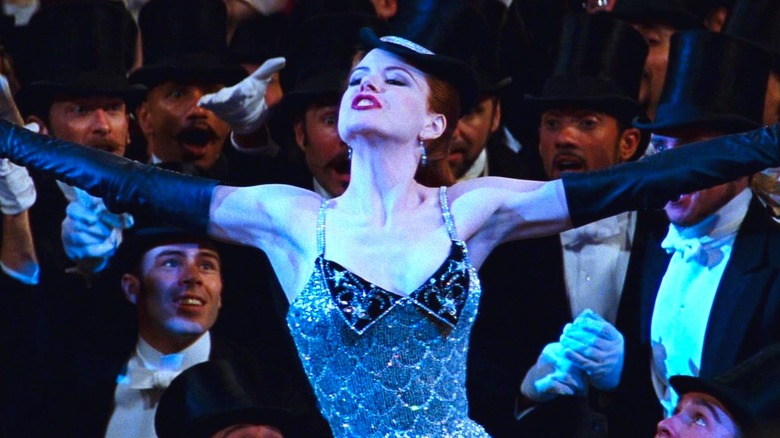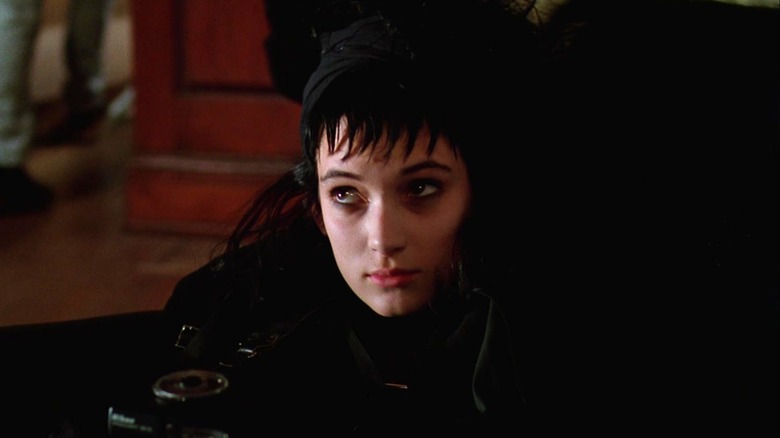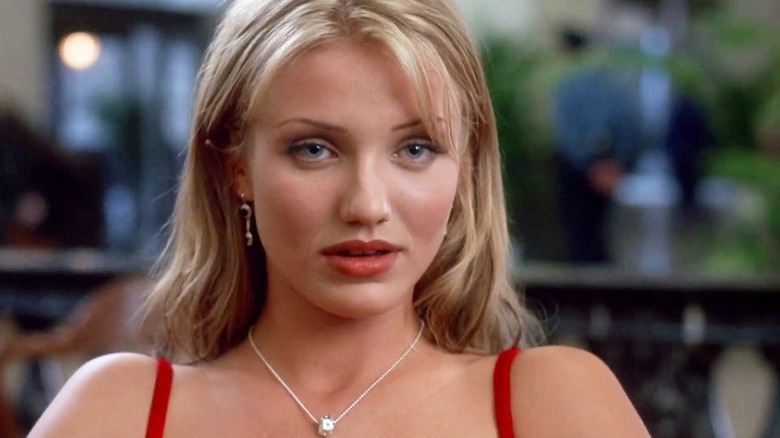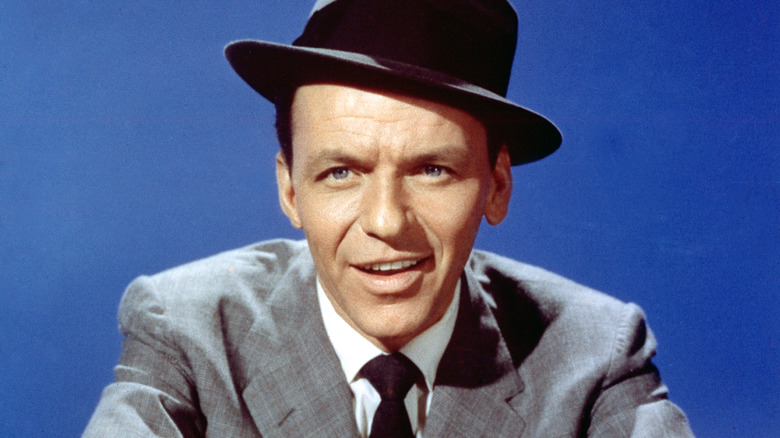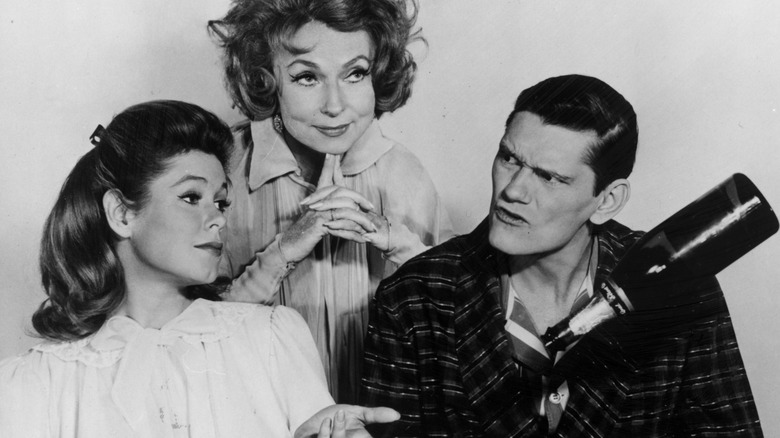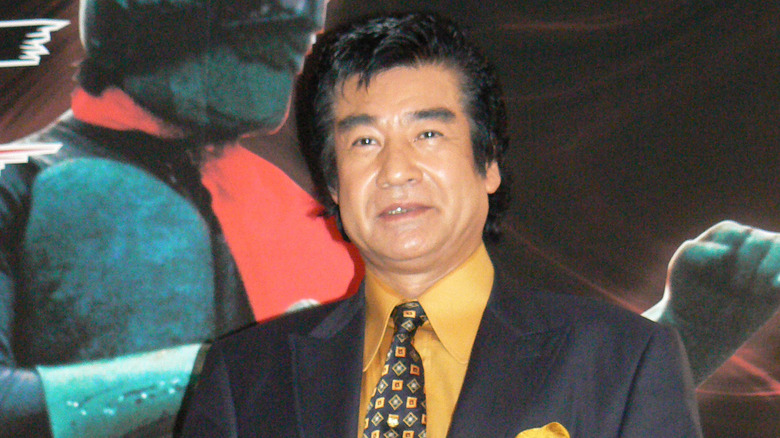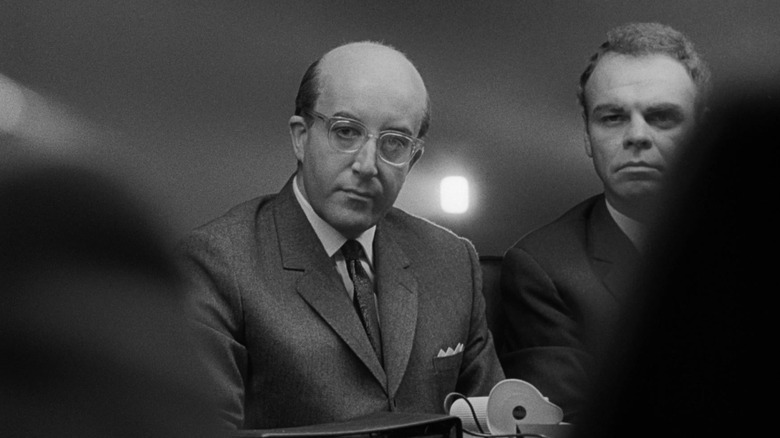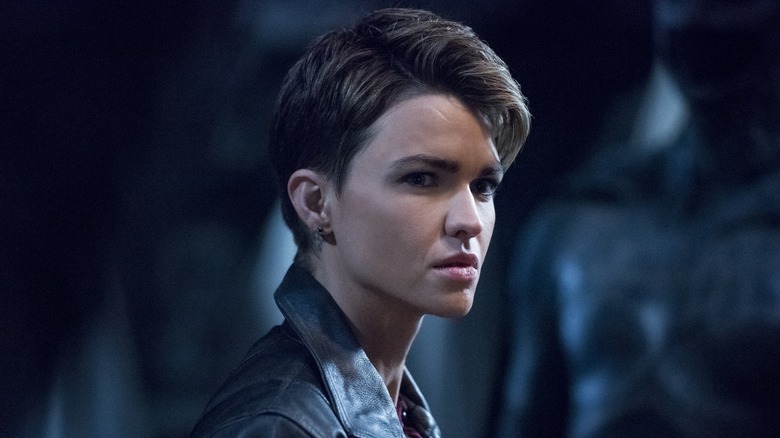Actors Who Were Replaced After Getting Injured
The recasting of actors is an old fascination that's only becoming more prevalent as intellectual property replaces traditional movie stars. But, even as studios and streamers seemingly try to make actors feel more expendable with each reboot and recast, there's still at least one rarity in this area: Actors somehow injuring themselves out of a role entirely. In fact, after extensive research, we've only been able to find a handful of instances in which an actor had to be swapped out with one of their colleagues because they got hurt.
The following examples of actors having to give up a role due to injury are all interesting in their own way, and some of them have pretty wild stories behind them. We invite you to travel back with us to moments in Hollywood history where actors had no choice but to bow out and recover from injuries ranging from broken bones and torn cartilage to career-ending back problems.
Sean Young (Vicki Vale in Batman)
It's a well-known film fact that Sean Young (best known for her roles in "Blade Runner" and "Dune") infamously fumbled her chance to play Catwoman in "Batman Returns" by showing up to the Warner Bros. offices dressed in black latex, jumping about and bursting through doors screaming "I'm Catwoman!" What's less known is that this wasn't her first shot at Tim Burton's "Batman" universe — in fact, she had already been cast once before by the time her Catwoman dreams were dashed.
Young was chosen to play journalist Vicki Vale in 1989's "Batman," a big opportunity for her. She was worried about one scene in particular, however: A romantic horseback-riding date with Michael Keaton's Bruce Wayne. If this doesn't sound familiar, it's because the scene was ultimately cut from the final film, but not before the mare-shy Young was asked to learn how to ride a horse. During a training session that took place a week before the start of production, she fell from her horse and fractured her arm. Producer Jon Peters hastily sent her home and brought in Kim Basinger.
In a 2021 interview with The Daily Beast, Young said that the situation could have been handled better and that they probably didn't need to recast her. "Could they have kept me on the show and shot around my arm? They probably could have." She went on to say that Jon Peters was the one who was keen on bringing in Basinger. "He saw an opportunity to exit me, and he did. And no one ended up being very happy with that choice. But it is what it is. I had an accident and then got walked to the door."
Nicole Kidman (Meg Altman in Panic Room)
Nicole Kidman was arguably at the height of her stardom in the early 2000s, so much so that she had to navigate back-to-back shooting schedules from time to time. In 2001, Kidman starred opposite Ewan McGregor in "Moulin Rouge!," a movie musical directed by Baz Luhrmann that drew inspiration from several different classic operas to tell a mostly original story. He also populated it with a number of hit songs from different decades, including a pop rendition of "Diamonds Are a Girl's Best Friend." This song required many of the actors — Kidman included — to execute a breathless, highly technical dance sequence. During one of the takes, Kidman fell and tore the cartilage in her knee.
Though Kidman also broke three ribs during the production (two while shooting another high-intensity dance number and another from wearing an extremely tight corset), the knee injury lingered longest. The injury hindered Kidman to the point that she had to drop out of her next movie, David Fincher's "Panic Room," two weeks into filming. It was discovered that the damage done during "Moulin Rouge!" was actually worse than previously expected and hadn't been allowed to heal properly.
Because of this revelation, Kidman decided to leave the project to focus on her recovery, with the role then going to Jodie Foster. More than a decade later, she seemed to have little regret about how much of her body she gave to Luhrmann's film. She told Yahoo! Entertainment in 2014, "[I was] dancing in high heels, I broke my ribs, I tore up my knee. I did all the things you're meant to do while creating great art."
Winona Ryder (Mary Corleone in The Godfather Part III)
After starring in the hit films "Heathers" and "Beetlejuice," Winona Ryder became one of the most sought-after actors in Hollywood. She was busier than ever and beat out competitors like Julia Roberts and Madonna for a role in arguably the most anticipated film in years: 1990's "The Godfather Part III." She was cast as Mary Corleone despite not being able to attend rehearsals for the sequel, as she wasn't done with her commitments to the comedy "Mermaids" yet.
Ryder arrived at the shoot in Italy just in time to prepare for her first scene (she also happened to be accompanied by Johnny Depp, her boyfriend at the time). One of her co-stars, Andy Garcia, noticed that Ryder looked extremely tired. Before the two could be introduced properly, she left the set and told production she wouldn't be able to work. "I was giving her space because they were doing some tests with her," Garcia told Vanity Fair (via Business Insider). "I figured when she's finished I'm sure they will bring her out to the set and I'll meet her. But she went home and couldn't work and that was it."
The next day, Depp actually called in sick on her behalf, which effectively withdrew Ryder from the film entirely. Reports eventually came out that she had suffered a nervous collapse. The part of Mary Corleone would ultimately be played by none other than Sofia Coppola, the daughter of director Francis Ford Coppola. Her presence in the film was strongly derided not just for being a clear instance of creative nepotism, but for her overall poor performance, something Garcia felt was harsh.
Cameron Diaz (Sonya Blade in Mortal Kombat)
Cameron Diaz struck gold in 1994 when she starred opposite Jim Carrey in "The Mask," a critically and commercially successful crowd-pleaser that also served as her feature film debut. Almost overnight, she became one of the biggest names in Hollywood. As such, she was in a somewhat precarious situation: She needed to pick her next project well. Diaz wasn't yet big enough to feature in a truly abysmal project and remain on track to become a big star, which is why she's likely happy that an injury stopped her from being in the 1995 adaptation of the video game "Mortal Kombat."
The producers of "Mortal Kombat" were struggling to cast the beautiful and deadly character Sonya Blade. Like "The Mask" it was being made by New Line Cinema, so they were invited to watch advance footage of Diaz as Tina Carlyle before anyone knew who she was. "As soon as we saw the dailies from 'The Mask,' there was no question that she was a star," associate producer Lauri Apelian told The Hollywood Reporter. "We put her into training, because she had not really done this kind of martial arts work before. She broke her wrist right before shooting to the point where she couldn't do the martial arts stunts we needed.
With Diaz out of the picture, Bridgette Wilson-Sampras was offered the role of Sonya, though she had to go through several rounds of auditions first. "The casting process was really long," the actor (who is best known for her roles in "Last Action Hero" and "Billy Madison") recalled during THR's oral history of the video game flick. "I went back and auditioned and met with them so many times. Probably seven."
Frank Sinatra (Harry Callahan in Dirty Harry)
It's difficult to imagine anyone but Clint Eastwood in the role of no-nonsense cop Inspector Harry Callahan from the "Dirty Harry" film series. Eastwood played the role in five films from 1971 to 1988, cementing himself as one of the defining figures of the neo-noir movement. Part of what makes him so perfect for the character (and the genre) is his trademark glare, incredibly steely and impossible to replicate. However, the "Dirty Harry" films may have been quite different if it weren't for an injury to the original star: Frank Sinatra.
Back when William Friedkin was still in the director's chair, the first film was essentially meant to be a star vehicle for Sinatra, with the main character modeled after him. But, after six months of tireless development, Sinatra pulled out (arguably a blessing in disguise, seeing as it opened up the door for Eastwood and allowed Friedkin to work on "The French Connection"). The crooner broke his wrist while filming "The Manchurian Candidate" and had yet to recover to the point that he was able to wield Callahan's now iconic Smith & Wesson comfortably.
A number of other stars were reportedly offered the role before it came to Eastwood, most notably John Wayne. However, Wayne and Sinatra famously didn't get along at the time, and Wayne is said to have refused to even consider the project because he "didn't like being offered Sinatra's rejections," per Collider. George C. Scott, Burt Lancaster, and Steve McQueen all turned it down, and Robert Mitchum called the script "a piece of junk" when it landed on his desk. Paul Newman was also courted, and, while he didn't fancy it himself, he's the one who told producers to consider Eastwood.
Dick York (Darrin Stephens in Bewitched)
Dick York began his acting career as a teenager and went on to become a star of the stage, screen, and — for a time — radio. Things really took off for him when he landed a series regular role in the ABC sitcom "Bewitched." He played Darrin Stephens, a regular guy who winds up marrying a real-life witch. York was lauded for his performance on the show, even netting a Primetime Emmy nomination in 1968. It likely surprised viewers, then, that York was replaced just a year later by another actor named Dick Sargent.
It all stemmed from a back injury that York sustained while working on Gary Cooper's Western film "They Came to Cordura." During a scene in which York and Cooper were operating a railway handcar, an extra accidentally leaned on the mechanism York was lifting, causing York to suddenly and unknowingly go from lifting nothing to lifting the body weight of a grown man. "The muscles along the right side of my back tore. They just snapped and let loose," York told FilmFax magazine in 1992. "And that was the start of it all — the pain, the painkillers, the addiction, the lost career."
Eventually, the pain and his addiction to prescription medications caught up with him — he collapsed on the set of "Bewitched," and producers felt they had no choice but to replace him. He fell on hard times in the years that followed, but he held no ill will. "I've been blessed," he said. "I have no complaints. I've been surrounded by people in radio, on stage and in motion pictures and television who love me. The things that have gone wrong have been simply physical things."
If you or anyone you know needs help with addiction issues, help is available. Visit the Substance Abuse and Mental Health Services Administration website or contact SAMHSA's National Helpline at 1-800-662-HELP (4357).
Hiroshi Fujioka (Takeshi Hongo in Kamen Rider)
The iconic Japanese character Kamen Rider is a motorcycle-riding superhero who battles terrorists and other national threats on a regular basis. He first appeared on TV in the early 1970s, played by Hiroshi Fujioka. When this Kamen Rider wasn't beating up bad guys in a high-tech grasshopper outfit, he was Takeshi Hongo, a mild-mannered student. Fujioka was perfect in the role, but changes were necessary when a serious accident took place on the set of the "Kamen Rider" series.
Fujioka performed his own motorcycle stunts for the show, something that (unless you're Tom Cruise), you just wouldn't find in Hollywood these days. During one stunt, he was thrown from his motorcycle and sustained serious injuries, including a broken leg. "I was so severely injured that no one was sure whether I'd live or die," Fujioka told Anime News Network. "When it came to getting better, I kind of took a step back and thought, 'Okay here's what's happening, I'm going to have to be even more determined if I want to go back to the show.'"
Instead of killing Hongo off, the character was written out of the story for a while. In his place, the creators developed Hayato Ichimonji (aka Kamen Rider 2), played by Takeshi Sasaki. Behind the scenes, Fujioka was working hard on his recovery in the hope that he could come back to the series — which he eventually did. "I decided that I would do anything to return to the show," he recalled. "So I spent a lot of time going through rehabilitation for my body and that was a big ordeal for me. Even looking back now, it's a fight I would never want to have to face again."
Peter Sellers (T.J. Kong in Dr. Strangelove)
"Dr. Strangelove or: How I Learned to Stop Worrying and Love the Bomb" is a Cold War satire movie directed by the legendary filmmaker Stanley Kubrick. Though it may be funnier than most of his films, it's in many ways no easier to watch because of its razor-sharp, nihilistic sense of humor. In other words, it's the sort of movie that makes you laugh and fall into despair at the same time.
Part of what makes "Dr. Strangelove" work as a piece of entertainment is the brilliant Peter Sellers, who plays not only the film's titular nuclear scientist but two other major characters as well (Captain Lionel Mandrake of British Royal Air Force and United States President Merkin Muffley). One might be forgiven for assuming that Sellers' multicasting was a deliberate artistic choice, but it was actually Columbia Pictures that insisted upon Sellers playing not three but four main characters in the film. In their infinite wisdom, execs determined that Sellers and Kubrick's previous collaboration, "Lolita," was successful only because it had Sellers doing a bunch of different characters.
So, what happened to Sellers' fourth role? He was set to play the tough Texan Major T.J. "King" Kong, despite some apprehension (Sellers wasn't particularly confident that he could pull off a Texas dialect). During production, however, Sellers sprained his ankle, a massive hindrance in portraying a character that spends most of their time scrunched up in a fake cockpit. Rather than have him fight through the pain, producers agreed to keep Sellers to just three roles, and they brought in real-life rodeo star Slim Pickens to fill in for him.
Ruby Rose (Kate Kane in Batwoman)
Probably the most memorable and high-profile recasting on this list, Ruby Rose only lasted one season leading the Arrowverse series "Batwoman" before she was unceremoniously written off and replaced by an entirely new character (played by Javicia Leslie). When her departure was first announced, it wasn't terribly surprising — Rose, fresh off a "John Wick" film, was arguably getting too big for the Arrowverse, and the first season had been the target of a review-bombing campaign by a group of fans who were apparently unhappy with Rose and the show's direction.
According to Rose, a major part of her decision to leave the show came after she severely injured herself doing a stunt. Despite having to undergo surgery, producer Peter Roth allegedly forced her to return to set before she could fully recover. She said that this contributed to an already taxing workload that eventually led to her burnout. Rose went on to accuse Roth of behaving inappropriately with women, and she also said that co-star Dougray Scott verbally abused females on the set.
Warner Bros. reacted with a strongly worded statement that positioned Rose as the real troublemaker. "Despite the revisionist history that Ruby Rose is now sharing online aimed at the producers, the cast and crew, the network, and the Studio, the truth is that Warner Bros. Television had decided not to exercise its option to engage Ruby for season two of 'Batwoman' based on multiple complaints about workplace behavior that were extensively reviewed and handled privately out of respect for all concerned," a statement read (via Deadline). Scott also spoke out to defend himself, adding, "I absolutely and completely refute the defamatory and damaging claims made against me by her; they are entirely made up and never happened."
